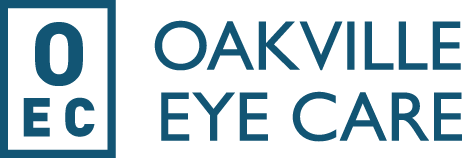Is your child nearsighted?
Now there are actually things you can do, instead of just getting them stronger and stronger eyeglasses every year!
We have listed a few proven techniques that have shown to slow down or (in some cases) stop your child’s vision from getting worse.
Low dose atropine
For many years, 1% atropine eyedrops have been approved for use in babies and young children from the treatment of amblyopia (lazy eye), but according to the Atropine for the Treatment of Childhood Myopia (ATOM1) study, it was shown it may also slow down the progression of myopia. However, after the cessation of the atropine 1% eyedrops after the second year of use, there was a significant rebound of myopic progression. Then came the subsequent ATOM2 study by Chia et al in 2012. In the ATOM2 study, it was found a lower dose of atropine eyedrops still had a significant effect on slowing myopic progression with minimal rebound after discontinued use of the topical medication. In fact, according to the ATOM2 study, 0.01% atropine appears to slow myopia progression by 50%.
Are these eyedrops safe?
The safety of atropine eye drops was considered during the ATOM studies and no serious adverse events occurred during the study - no cataract, glaucoma retinal disease; and no systemic side-effects. While the usual side effects from 1% atropine are pupil dilation (light-sensitivity), glare, and loss of accommodation (blurred vision at near), the ATOM studies found the lower concentration of 0.01% atropine had minimal side effects - only 1% of the study group complained of glare and there was no lose of near vision reported.
Orthokeratology
Orthokeratology (ortho-k) is a non-surgical treatment using specially designed high oxygen permeable retainer lenses to gently reshape the cornea (the front surface of your eye); these special retainers are worn only while you sleep and provide clear, natural vision when the retainers are removed upon waking. In additional to seeing well during the day without any optical lenses, ortho-k appears to reduce the progression of myopia by over 50%.
Are ortho-k lenses safe?
The safety of wearing ortho-k lenses overnight has been studied and along with other contact lens options, there is an increased risk of microbial keratitis (eye infection) compared to wearing spectacle lenses. As such, we strongly advocate and stress the importance of proper hand washing and handling of any contact lens. In doing so, this will further minimize the small risk of an eye infection that already exists.
Orthokeratology was FDA-approved (USA) in 2003 and we only use high-oxygen permeable lens materials that are FDA-approved for overnight ortho-k lens wear.
Peripheral defocus soft contact lenses
There are both multifocal soft contact lenses (used off-label) and specially designed peripheral defocus soft contact lenses for myopia control. The most recent release of the Coopervision MiSight daily soft contact lens has shown to reduce myopic progression by 59%.
Are soft contact lenses safe?
As with ortho-k lenses, there is a small risk of microbial keratitis (eye infection) and other contact lens-related complications compared to wearing spectacle lenses. Typically this is associated with improper hygiene or over-use of contact lenses.
Peripheral defocus or Progressive spectacle lenses
In 2014, after a two year study at the Hong Kong Polytechnic University, the MiyoSmart lens with DIMS (Defocus Incorporated Multiple Segments) technology was show to reduce myopic progression in children by 59%. As one of the leading clinics to be certified and licensed to dispense this lens in our country, we are so excited this technology is now available in Canada.
There are are also a handful of other bifocal or progressive lens options that appear to also slow down myopic progression. However, the success of these lenses are limited, with the potential to slow myopia by approximately 20%.






